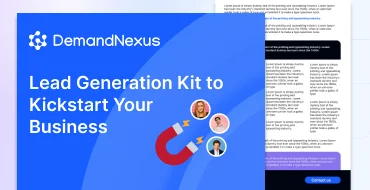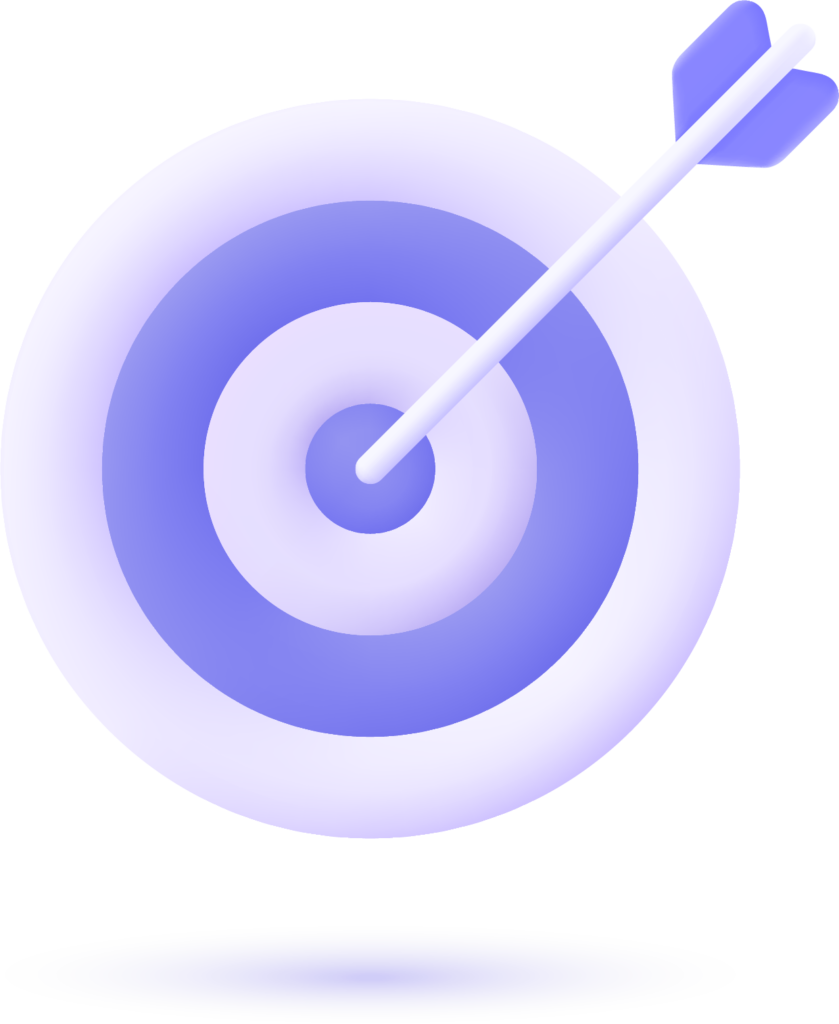What Are B2B Sales KPIs and Why Do They Matter?
B2B Sales KPIs are the measures by which sales teams track their performance over time. They even measure everything, whether it is how long it takes to close a deal or how much revenue each sales rep is generating. B2B sales KPIs provide clarity into what should be the best focus for the sales teams, ensuring efforts are in line with business growth.
Why B2B Sales KPIs Matter:
- Data-Driven Decision Making: You can make fact-based decisions with perfectly tracked KPIs.
- Alignment with Business Goals: By using KPIs, you will align the efforts put into the sales process with overall business goals to work towards common targets.
- Identify Areas for Improvement: By tracking how things go, you can point out where the sales process is slowed down or where leads fall through the cracks.
Must-Have B2B Sales KPIs You Should Track
Track the appropriate KPIs in order to make your sales process efficient. Here are the key ones to track for maximum performance.
1. Customer Acquisition Cost (CAC)
Customer Acquisition cost is the total cost of acquiring a new customer, including all marketing and sales costs. Controlling this cost very low and acquiring high-quality leads is how to stay profitable.
2. Customer Lifetime Value (CLV)
CLV measures the total revenue that a customer produces over time for your business. The longer the CLV, the more value is obtained from a customer relationship.
3. Sales Cycle Length

This KPI tracks how long it takes to convert a lead into a paying client. The shorter the sales cycle, the better you are at doing it.
4. Conversion Rate
The conversion rate is the ratio of leads that are changed over to sales opportunities. A healthy conversion rate means that your lead qualification team is adequately qualified.
5. Average Deal Size
This is a direct measure of how many revenues are created per deal. Monitoring average deal size ensures that the focus of your sales team is on good, high-value customers.
6. Sales Growth Rate
This measures the percentage increase (or decrease) in sales over a specific period. This measure gives information on sales growth, which is critical for long-term business growth.
Sales Team Productivity Metrics
Sales team productivity metrics enable you to assess individual as well as collective performance, thus forming a basis on which you can understand your strengths and weaknesses in the team.
1. Sales Team Productivity
Track the total number of deals closed, revenue generated, and the total number of sales activities completed by the entire sales team.
2. Sales Rep Performance
Monitor each sales representative’s performance based on the indicators of targets, conversion rate, and time to close.
3. Sales Team Velocity
Sales force velocity measures how fast your team can close a deal, and generate revenue for you. The higher the speed of the sales force velocity is, the more efficient your team is.
4. Sales Team Efficiency
This KPI shows you how efficient your sales team is in converting the leads into a paying customer. Low efficiency may indicate that your sales process or qualification of leads is not in tune with your expectations.
Optimizing Your Sales Process with KPIs
In order to improve your sales process, you need a set of KPI’s that can give you an overview of efficiency and bottlenecks in it.
1. Efficiency in Sales Processes
Track the amount of time each of your sales reps spends in each of the stages of the sales funnel. An efficient process means faster closing of deals.
2. Sales Funnel Conversion Rates
This is a measure of what percentage of leads are experiencing a move from one stage of your funnel to the next. Optimizing your funnel ensures you are fostering leads appropriately.
3. Sales Cycle Time
The time taken between when the first contact was made and when the deal was closed is termed as sales cycle time. The reduction of the same time may increase revenues because deals are moving faster in the pipeline.
4. Sales Rep Activity
Monitor the activities that the sales reps are performing, including calls, e-mails, and meetings. Active sales reps tend to close bigger deals. Thus, following the activities will be very helpful in providing information on productivity.
Setting Sales Goals and Targets
One of the basic areas where well-defined goals can be made is when the focus becomes important for driving sales performance and aligning all the efforts put in by your team to business objectives.
1. Revenue Targets
Assign specific revenue targets both to the overall sales team and individual sales reps. The direction these targets take can be measured to ensure that all have something working towards a common purpose.
2. Sales Quotas
The setting of precise sales quotas will result in motivation of the sales reps. It can be within the number of deals closed, revenue earned, or even customer retention.
3. Sales Growth Targets
Growth targets will allow your team to focus on growing your customer base, which again leads to revenue increase.
4. Customer Acquisition Targets
Define how many new customers your team should acquire within a specific period. This means tracking that your team isn’t only closing deals but also expanding the customer base.
Managing Your Sales Pipeline
Managing a healthy pipeline ensures that you are attracting leads and converting them quickly into paying customers.
1. Pipeline Velocity
Pipeline velocity refers to the speed at which deals are moving through the sales pipeline. A high velocity means your team is getting things done efficiently.
2. Pipeline Conversion Rates
Calculate your conversion rate between each stage of the sales pipeline. Optimizing these conversions means you will be getting high-quality leads turned into customers.
3. Deal Size
This ability to track the average revenue generated per deal allows you to focus in on attracting and closing high-value customers.
4. Sales Stage
Monitoring which stage every deal is helps clarify where your focus needs to be-to close deals or nurture leads.
Sales Rep Productivity and Activity
Tracking the productivity and activities of your sales reps provides vital information regarding who is doing well and where improvements are in order.
1. Sales Rep Activity
Record the calls, emails, and number of meetings for each sales representative. This would clearly give you an insight into the activity level of each.
2. Sales Rep Productivity
Measure how productive each sales rep is by monitoring numbers of deals closed and revenue accrued.
3. Sales Rep Efficiency
It evaluates the effectiveness of the conversion of leads into customers by the sales reps. This would rank the best performers and identify those that need coaching.
Customer Acquisition and Retention
Guranteed you’re not only bringing on customers but keeping them for the long-term.
1. Customer Acquisition Cost (CAC)
CAC measures the cost of acquisition for each new customer, ensuring you don’t spend too much to get customers.
2. Customer Lifetime Value (CLV)
CLV tells you the total revenue generated from a customer during the lifetime of the relationship with your company.
3. Customer Retention Rate
This KPI measures the percentage of customers retained for a specific period. If you possess a higher retention rate, you are creating more lasting relationships.
4. Customer Churn Rate
Churn rate is measured as the percentage of customers lost during a period. If you don’t reduce churn, you can’t sustain your business.
Tracking and Visualizing Your Sales KPIs
Having the right KPI tracking and visualization tools really does make a big difference on how one would use his data in driving decisions.
1. Sales Dashboards
Make use of sales dashboards to have real-time tracking of KPIs, meaning instant access to your sales performance data.
2. Sales Analytics
Sales analytics is that tool which gives deeper insights to sales performance by identifying trends and areas where improvements could be made.
3. Sales Reporting
Reporting sales regularly monitors performance over time and drives data-driven decisions on the refinement of your strategies.
Best Practices for Implementing Sales KPIs
For KPIs to be really applied to achieve success, it has to be implemented rightly.
1. Align Sales KPIs with Business Objectives
The criteria you track must align with the larger business objectives which usually include either growing revenue or expanding market.
2. Set Clear Targets
Clearly mention the targets you would like your sales representatives or teams to achieve. It will help everyone focus on the same things.
3. Track and Analyze Regularly
Keep regularly monitoring and analyzing your KPIs so as to understand trends and areas of improvement.
4. Adjust and Refine as Needed
KPIs are not written in stone. As your business changes, be sure to update and refine your KPIs so they stay relevant.
Conclusion
B2B sales KPI tracking is very important in order to optimize their performance, set up the atmosphere for revenue growth, and eventually ensure long-term business success. It pays to concentrate your attention on the proper metrics, such as Customer Acquisition Cost, Sales Cycle Length, and Sales Growth Rate, so as to fine-tune the sales process and coordinate the effort of sales teams with company-level strategic objectives. These KPIs should be frequently examined, and the strategy would have to be adjusted according to what you need. And most importantly, you have to keep your sales team focused with clear targets.
FAQs
1. What is the most important B2B sales KPI?
The KPI varies by business goals, but there are probably only two that matter to any organization: CAC and CLV.
2. How can I reduce my Sales Cycle Length?
Shortening sales cycle length can involve an optimization of your sales funnel, better lead qualification, and the automation of tasks to speed things up.
3. What tools should I use to track sales KPIs?
I recommend using sales dashboards and CRM systems like Salesforce or HubSpot for tracking KPIs in real time.
4. How do KPIs improve sales performance?
Applying measurable goals and insights into your sales process, KPIs helps you identify potential areas for improvement and optimize your strategy.

Download this Monthly KPI Tracker Sheet ➜


